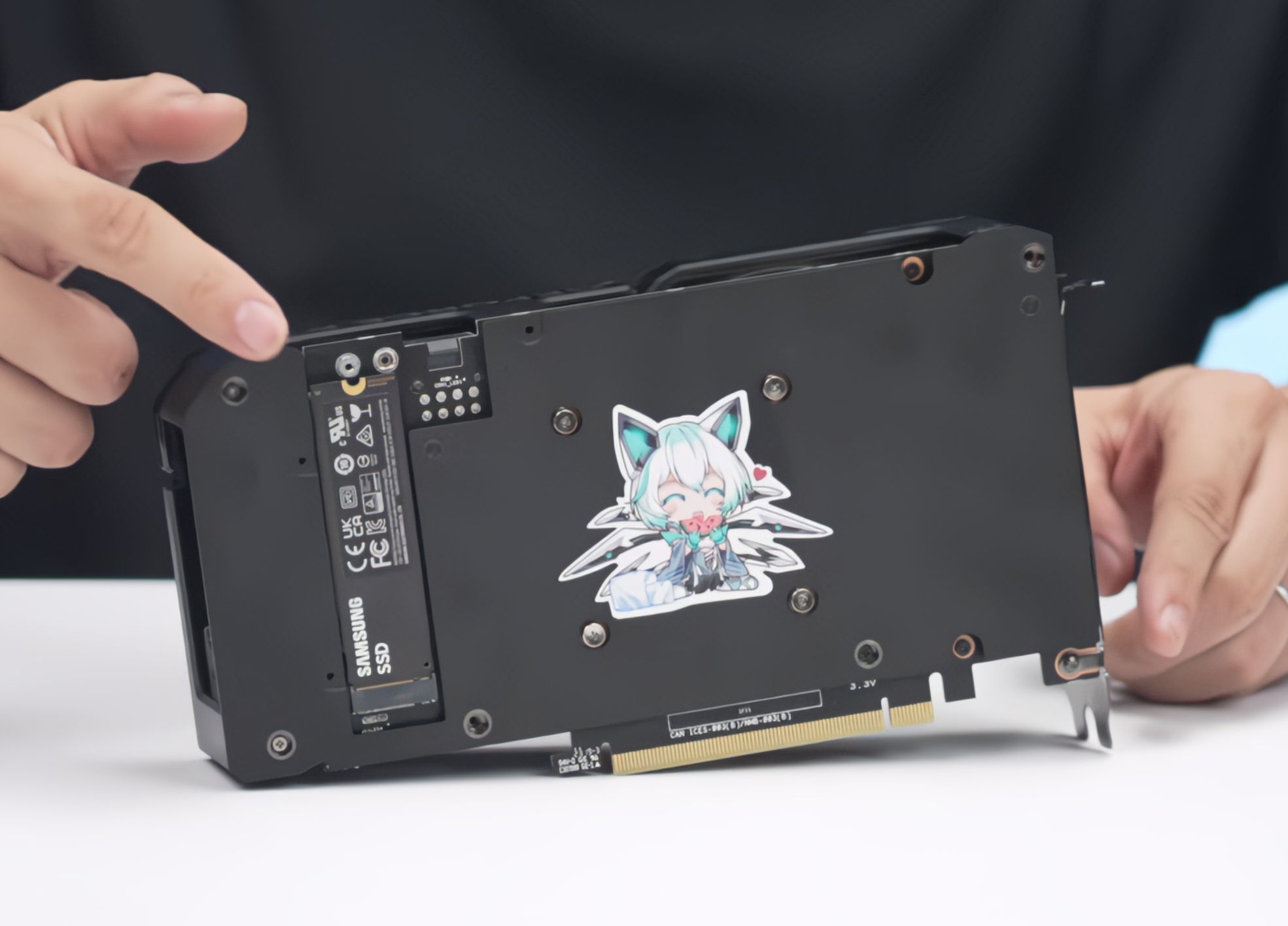ASUS's Concept GeForce RTX 4060 Ti GPU Comes With An Onboard M.2 Gen 4 SSD Slots
ASUS has showcased a concept of integrating an M.2 SSD slot into a GeForce RTX 4060 Ti graphics card with the aim of utilizing the unused PCIe lanes inside the GPU.
ASUS Wants To Make Use of Unused PCIe Lanes Potential By Equipping M.2 Slots Onboard GPUs
Tony Yu, ASUS's General Manager, displayed the idea of having an actual Gen 4 M.2 SSD running alongside the GPU on the same PCB. They used a Samsung 980 PRO 2TB SSD which was attached to the backside of the graphics card through a cut-out that was made. This cut-out is easy-access & the backplate acts as a heatsink for the storage device.
You may be wondering why an SSD is installed inside a GPU; the answer is simple: this is done to utilize the unused PCIe lanes. You see, cards such as NVIDIA's RTX 4060 series feature just PCIe x8 lanes which means that AIBs using a full x16 slot have an additional x8 lane. M.2 SSDs utilize the PCIe x4 interface and that makes perfect sense to put up to two SSD slots on the PCB of the card.
2 of 9
Moreover, one of the benfits highlighted by ASUS of having an M.2 slot on the graphics card is the easiness of changing an SSD inside your computer. Typically, mounting an SSD requires us to go through many complicated steps, which may annoy consumers who frequently swap out their SSDs. Well, if the GPU has an M.2 slot, that will simplify things.
Having an SSD mounted on a GPU could lead to temperature issues however, this factor was kept in mind, which is why the company had modified the PCB of the GPU in a way that the cooling for the GPU could also reach the SSD. Since GPUs are equipped with much larger heatsinks than what we have seen with SSDs, initial testing revealed a drop in 10°C of the SSD temperature. Power will also be a little concern since Gen 4 SSDs don't pull that much from the wall and the RTX 4060s are equipped with a single 8-pin connector which in itself can allow for up to 150W with an additional 75W coming from the PCIe slot. Additionally, this is an ASUS custom design that should deliver a good thermal performance.
During tests, the SSD showcased similar performance when connected to the ASUS GeForce RTX 4060 Ti GPU as it would yield when connected to a Gen 4 motherboard. The temperatures were also under 50C, even under full stress load.
Considering this idea's feasibility, one may argue that PCIe extension cards are the way to go if you are looking for additional M.2 slots. Well, this may be right, but having PCIe cards and GPU installed on a single motherboard will compromise the aesthetics of a build. Having an M.2 slot on graphics cards slightly affects the power draw and will save costs compared to buying an extension card.
AMD also made a similar approach with its Radeon SSG graphics cards but rather than utilizing the additional SSDs for traditional storage, the SSG made use of the NVMe storage to boost bandwidth and transfer rates for the GPU itself. The idea is currently a concept, and ASUS hasn't revealed plans to launch the GeForce RTX 4060 Ti with such a design into the consumer market yet.
The decisive point will be how such GPUs will be priced at. If the difference compared to an ordinary graphics card is less, they will surely attract consumer interest. This isn't the only prototype/concept card that ASUS is working on as the AIB has also unveiled plans to make GPUs without any physical power connectors as seen at Computex 2023.
News Source: @Olrak29_
Source: Wccftech


